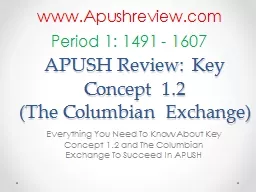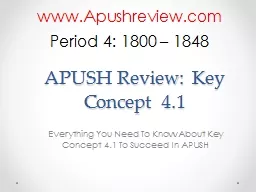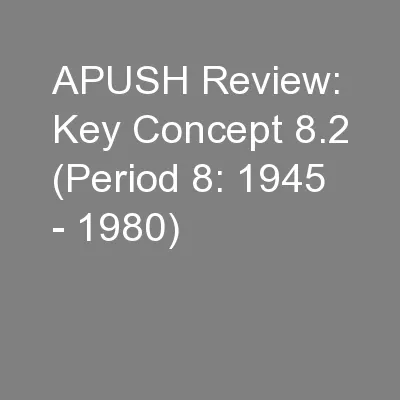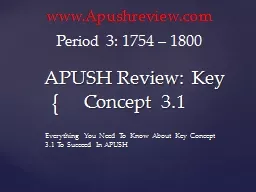PPT-APUSH Review: Key Concept
Author : liane-varnes | Published Date : 2018-11-04
62 Everything You Need To K now About Key Concept 62 To Succeed In APUSH wwwApushreviewcom Period 6 1865 1898 Shoutout to Mrs Browns class from Arcadia High
Presentation Embed Code
Download Presentation
Download Presentation The PPT/PDF document "APUSH Review: Key Concept" is the property of its rightful owner. Permission is granted to download and print the materials on this website for personal, non-commercial use only, and to display it on your personal computer provided you do not modify the materials and that you retain all copyright notices contained in the materials. By downloading content from our website, you accept the terms of this agreement.
APUSH Review: Key Concept: Transcript
Download Rules Of Document
"APUSH Review: Key Concept"The content belongs to its owner. You may download and print it for personal use, without modification, and keep all copyright notices. By downloading, you agree to these terms.
Related Documents














